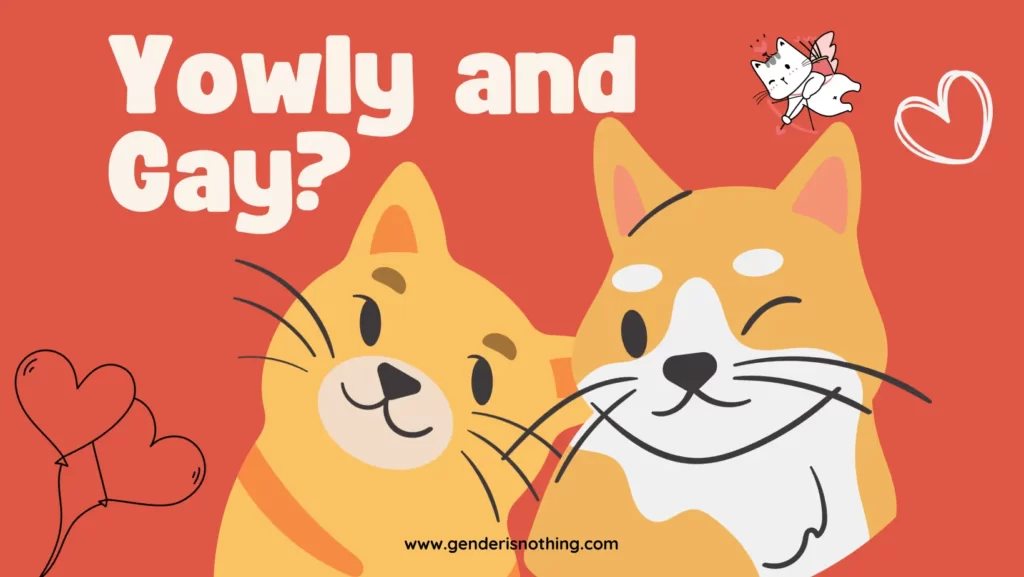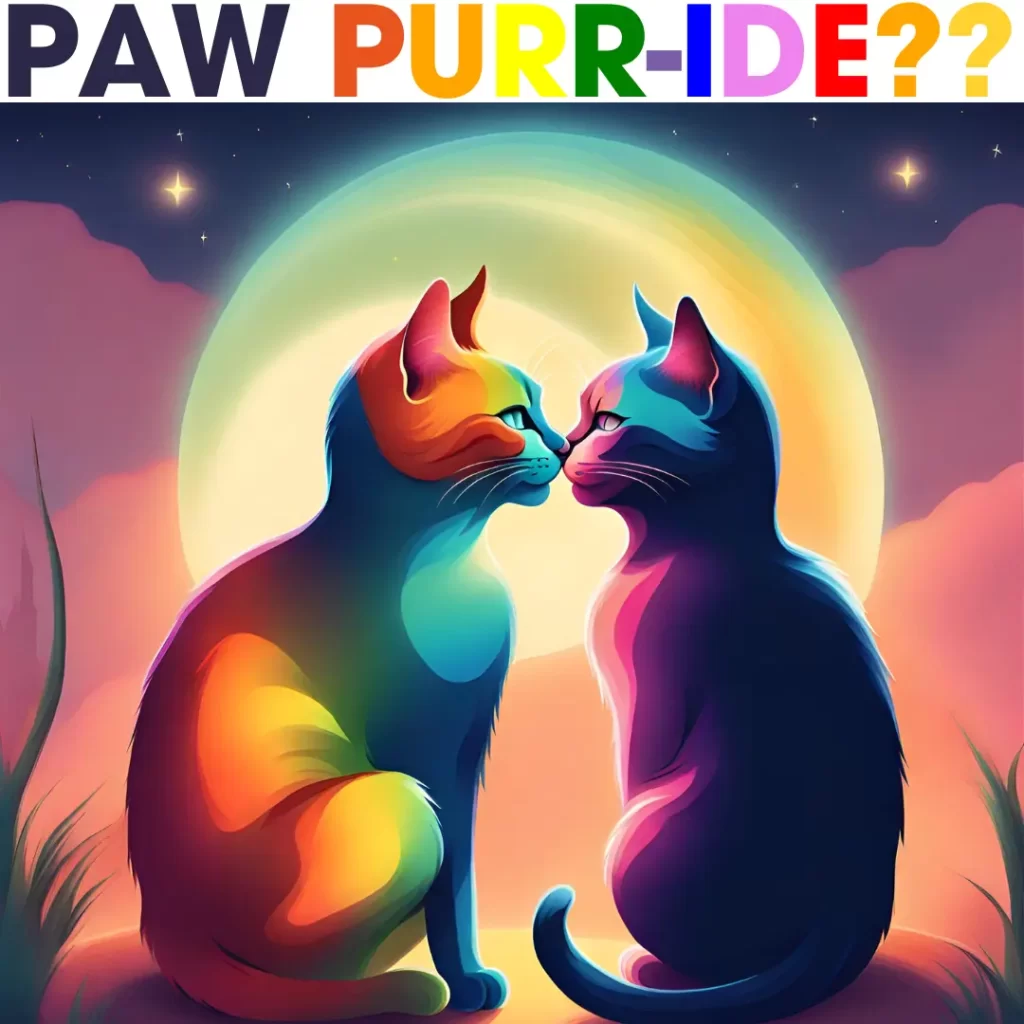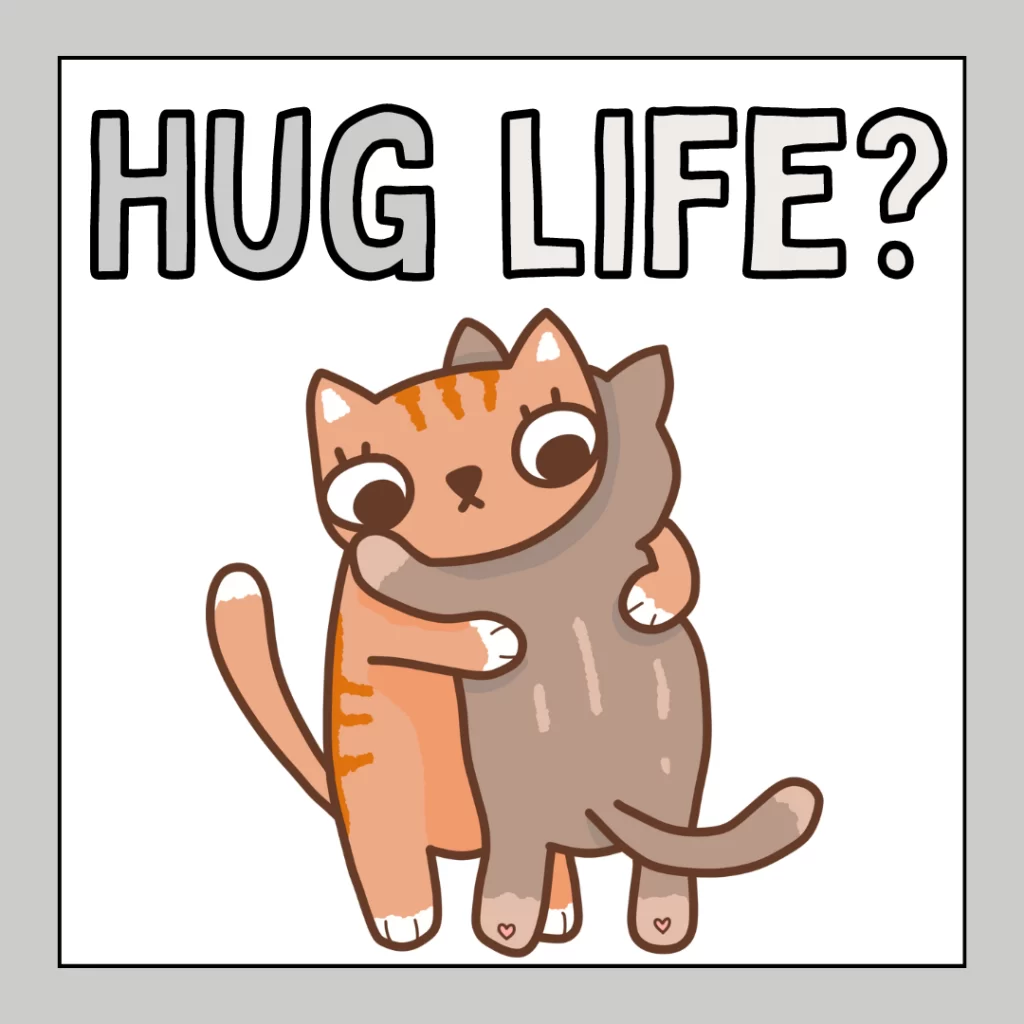
Is it my business to ask questions about feline sexuality? Maybe not. Humans are infamous for being meddlers. However, cat parents ask, “Can cats be gay?”, out of genuine concern and curiosity about homosexual behavior in both tomcats and queens.
We form an understanding of things through cognitive processing that involves identifying patterns, recognizing familiar objects or concepts, making comparisons with existing knowledge and schemas, contextualization, and critical thinking. It is not difficult to see that cat parents ask if their cats are gay, lesbian, or bisexual based on the inferences drawn from the behavior of the latter with other cats of the same sex by drawing an analogy with homosexual behavior in humans.
This is natural for most people because their prior exposure to the concept of homosexuality, if any, is in the context of humans. But, even in the human context, most people wrongly interpret the word “gay” only to mean a person who is sexually oriented towards a person of the same sex. In fact, there are many more labels, identities, and expressions that homosexual people take on. For example, a gay person may identify as asexual, an AroAce, or an Oriented AroAce, to name a few.
Merely exhibiting human-like homosexual behavior does not make cats “gay” in the way humans understand the term. If you attempt to use the human analogy to explain certain “behaviors” of your cats and label them as gay, lesbian, or bisexual, it will be factually incorrect and would amount to a misinterpretation of the issue.
Motivation is the Determinant
Unless we ask about the motivation behind the homosexual behavior exhibited by cats, an assessment as to homosexuality in cats cannot be made, let alone a judgement.
If this motivation is that of “identifying” as someone having a sexual orientation towards cats of the same sex and “expressing” themselves as such, it can be safely concluded that cats can indeed be gay.
However, the trouble is that an explanation on their motivation has to come from cats themselves. Despite all the giant leaps that science has made over the past several decades, there is no breakthrough in decoding the language of animals, if at all they have one.
For want of first hand information from the protagonists, we have to rely on scientific evidence, logical reasoning and rational deduction based on in-depth study of feline behavior to find a fairly definitive answer to the question.
Can cats be Gay – Behavior Speaks Loudest!!!
The noise which could distort our analysis has been cleared out, and we can now focus on cat behavior, rather than on labels of identity, orientation, and taxonomy.
Cats have been one of our oldest companions, having been domesticated 9000 years ago. In modern times, the popularity of cats as pets has increased several times in most geographies. I will be exploring the question mostly with reference to domestic cats and not wild cats.
Pet parents spend a lot of time and effort learning about animal behavior. It occurs to me that people generally understand the behavior of dogs much better than they understand the behavior of cats.
From what I have observed, cats are loners who are very independent and cherish their space. It’s a well-understood fact that it is an innate behavioral trait of cats as a species and not confined to domestic cats.
As per recent studies, around 80 percent of domestic cats in the United States are neutered or spayed. Since this constitutes a majority of pet cats in the country, we will be examining the question of “can cats be gay” with reference to neutered or spayed pet cats.
The primary reasons for getting your cats neutered or spayed are to check unnecessary breeding and spraying of urine to mark territory and to mellow down these otherwise aggressive animals. You will appreciate that the reasons are related to breeding, health, and behavior. However, we are only interested in the behavior part.
Can cats be gay, is a thought that occurs mostly in the minds of owners with more than one cat at home. The presence of another cat in its territory causes them to behave in a variety of ways.
The instinct of cats is to treat another cat as an intruder and behave aggressively, which is displayed by hissing, growling, swatting, and even physical fights. They try to mark their territory by spraying urine and leaving scents to establish their presence. However, neutering or spaying reduces the aggression and urine-spraying behavior to a great extent.
My cousins have had experience owning multiple cats simultaneously, and they tell me that the best thing to do is to keep them in well-defined spaces and to introduce them gradually.
I believe we have the context firmly in place to enable us to now focus on the behavior of cats that seems too “gay” to compel people to ask about the possibility of their cat being homosexual.
The question boils down to whether cats indeed display same-sex behavior.
Read Also: Can Men Wear Women’s Shoes?
Behaviors that beg the question – Can cats be gay?
The behaviors that cat parents have in mind are those of curling up with other cats of the same sex, cuddling, mutual grooming, head-pressing, nuzzling, humping, and so on. Such behaviors displayed by cats of the same sex compel cat owners to delve into the matter and find out if cats can be gay or homosexual.

Since the answer to the question lies in the study of behavior, we will pursue it by classifying these behaviors to help you understand their true nature and decide whether assigning sexual connotations to them is right or not.
Same-Sex Mounting
Both male and female cats often exhibit mounting behavior with their same-sex counterparts. The mounting behavior is often perceived as sexual by humans because we look at it in the human context. However, it is not correct as the motivation of cats as to their mounting behavior is entirely different.
While male cats may engage in mounting behavior as a display of dominance or to establish hierarchy, female cats may engage in mounting behavior as part of play. Therefore, what gets perceived as homosexual behavior in cats is actually a means of establishing physical dominance and social hierarchy, a display of aggressiveness, or a form of exploration and interaction.
It rules out the possibility of considering same-sex mounting behavior as an indicator of feline homosexuality.
Seduction

Sometimes, same-sex behavior in cats may be a tactic to entice a member of the opposite sex in close proximity into having intercourse. For instance, female cats have been observed to be too excited during “heat,” compelling them to engage in same-sex behavior to woo a male cat in the vicinity. Such behavior is not well understood by humans, as it is taboo in the human context. Even in cats, this behavior is seen only during the estrous cycle.
Play Fighting
Playful behavior among cats of the same sex is quite common, and it can even take the form of aggressive same-sex activity. This play fighting between cats of the same sex is characteristic of cats in general and is not reckoned to be of homosexual origin.
Grooming
Cats engage in mutual grooming which looks rather intimate if you witness the activity. This behavior seems especially “gay-like” if two male or female cats do it cosying up on a comfy couch, as if they were on a pre-arranged romantic date. Though it is a common social activity in many species, even the most well-intentioned cat parents would become doubting toms when they witness such a grooming session.
Read Also: What is Alterous Attraction | Is it Genuine or Feigned?
Explanation for Same-Sex Behavior in Cats not amounting to Homosexuality
Cats don’t mate for pleasure. It’s Animal Instinct. Literally.
Closely related to the concept of sexuality is the idea of deriving pleasure from sexual acts. Unlike humans and some other species, such as bonobos and dolphins, cats seem to be indifferent toward or even ignore the act of sex until the female cats are in “heat” or male cats encounter an “estrous” female. Both words are jargon for a recurring state of reproductive cycle in mammals during which the females experience sexual excitability and accept a male for procreation.
Mounting is a Communication Strategy and not Just Sexual Activity
The American Society for the Prevention of Cruelty to Animals® (ASPCA) suggests that cats may mount people, other animals or even inanimate objects around them, such as soft toys, pillows, furniture, etc. for play, and if it is an intact male, it may even be some form of masturbation. Given that we are talking about domestic neutered cats, masturbation can be ruled out.
As per ASPCA, mounting or humping is a mode of communication for displaying their dominance to other cats around them. It is also about playing and releasing stress and therefore, much less about sex than it is perceived.
Gay-Sex in Cats as a Case of Mistaken Identity
The biology of cats is such that when males are neutered, they do not emit pheromones infused with testosterone. An unaltered male may misinterpret this absence as a signal that the neutered male is a female, sometimes resulting in instances of mistaken-identity homosexual behavior.

Similar behaviors can also occur in the opposite direction. For instance, a female cat in heat may initially seek the company of a male, but once she is no longer ovulating, she might display open hostility towards males for the remainder of that period. It should not be misconstrued as a repulsion of the female to heterosexuality and labeling the queen as lesbian.
Allogrooming for Social Bonding
Allogrooming is a social grooming activity during which a cat grooms another by licking through the latter’s fur with its tongue. During this activity, the cats relax and even sleep cuddled up together. What gets mistaken for sexual behavior by humans is actually a part of social grooming.
According to experts, the advantages of allogrooming extend beyond the obvious hygiene benefits. It lays down the social order in terms of access to food and social support. Therefore, mutual grooming is a sign of trust and affection between the cats and helps strengthen their social bond.
Robin Dunbar, an anthropologist, postulates that grooming releases endorphins, neurotransmitters produced by the central nervous system, that trigger a sense of relaxation, help diminish nervous behaviors such as aggression, inappropriate urination, trembling, excessive scratching and marking, etc., and even induce sleep.
Intriguingly, Dunbar has theorized in his book, Grooming, Gossip and the Evolution of Language, that the phenomenon of grooming was replaced in humans to a large extent by gossip with the development of the faculty of language. It is indeed true that gossip has a role to play in the evolution and establishment of social hierarchy in human beings. However, the need for physical touch still exists, which is most easily understood by how the very survival of babies depends on it.
Read Also: How Long can a Woman Stay without a Man?
Anthropomorphism
People attribute human characteristics, emotions, and behaviors to animals and try to interpret their actions by projecting them on a human canvas. This tendency is formally known as anthropomorphism.
It may be acceptable to some extent in literature and art; however, it can cause confusion, misinterpretation, and even disharmony with nature when stretched too far.
Over-enthusiastic cat parents are often anthropomorphize readily to come to an easy explanation to an otherwise complex behavior of cats.
Closing Thoughts
Much like numerous other species, cats display homosexual behavior; however, it does not make cats “gay” or “homosexual” in the way humans understand the terms. The key differentiator is the motivation behind engaging in this homosexual behavior.
Since there is no way the cats themselves can shed light on their motivation, we have to rely on scientific observation and reasoning. Research indicates that homosexual behavior in cats does not point to a desire or orientation in the species akin to a homosexual identity in humans or such a way of life.
It may not be entirely wrong to classify questions like – can cats be gay – as anthropomorphism after a thorough examination of the subject.
Read also: 27 Uber Cool Eyebrow Slit Ideas for Men

